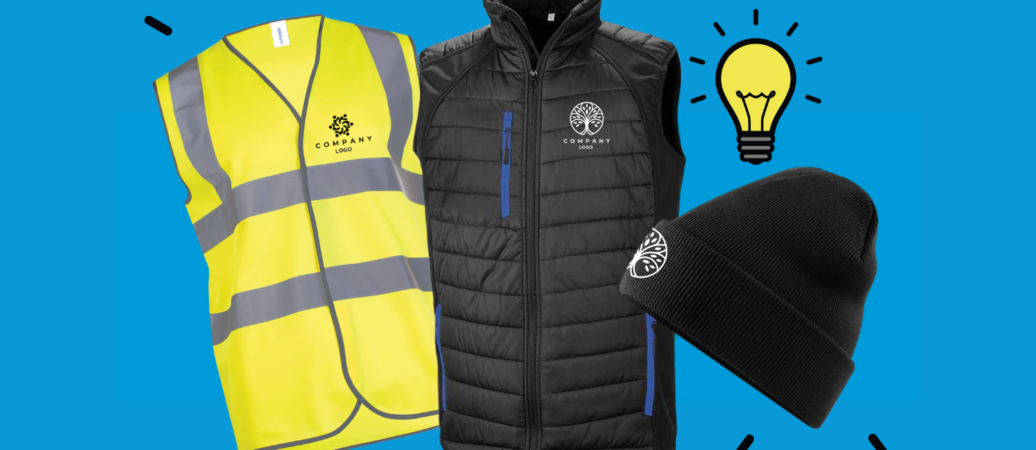Branded Clothing for Cold Climates: Which Fabrics Actually Work?
Branded Clothing for Cold Climates: Which Fabrics Actually Work?
Blog Article
Understanding Clothing: The Significance of Material Choices in Your Wardrobe
The selection of material in garments plays a crucial role in both aesthetics and functionality. Different materials provide differing levels of breathability, comfort, and resilience, straight affecting the user's experience. Understanding these nuances can enhance one's wardrobe considerably. Several ignore exactly how these choices can affect not just individual design, yet also sustainability. What textile choices could redefine your wardrobe and align it with both style and responsibility?
The Role of Material in vogue and Capability

Usual Fabric Types and Their Characteristics
When picking apparel, recognizing the attributes of common fabric kinds is necessary for making informed selections. Cotton, a widely-used natural fiber, is understood for its breathability, gentleness, and adaptability, making it ideal for laid-back wear and daily garments. Linen, another natural choice, flaunts exceptional moisture-wicking residential or commercial properties and a distinctive structure, ideal for warm climates.Wool, often preferred for its warmth and resilience, varies in excellence; merino woollen is soft against the skin, while coarser types are utilized for outerwear. Synthetic materials like polyester and nylon use longevity and resistance to creases, making them prominent for activewear and traveling garments. Ultimately, blends, which combine artificial and all-natural fibers, can enhance performance while maintaining comfort. By acknowledging these material characteristics, people can choose apparel that lines up with their lifestyle and visual preferences.
Breathability and Convenience: Picking the Right Fabrics for Various Environments
Picking the ideal materials for different climates can considerably improve comfort and general wearability. Breathable materials are crucial in warm climates, as they enable air flow and moisture evaporation. Fabrics such as cotton, linen, and moisture-wicking synthetics properly attract sweat far from the body, maintaining the user cool and dry. On the other hand, in cooler environments, thicker materials like woollen or fleece offer insulation while retaining breathability, making certain heat without overheating.Additionally, the choice of fabric weight plays an important function; lightweight textiles are more effective for summertime, whereas larger options are fit for winter months wear. Comprehending the distinct homes of each material allows individuals to clothe properly for differing weather. Eventually, choosing breathable and comfy materials tailored to details environments can considerably boost everyday comfort and enhance the general experience of wearing clothes.
Toughness and Treatment: How Fabric Impacts Long Life of Your Wardrobe
Picking the right products can substantially influence the longevity and treatment needs of a wardrobe. Fabrics such as cotton and polyester are understood for their strength and convenience of upkeep, making them suitable for everyday wear. On the other hand, fragile materials like silk and shoelace call for even more careful handling and specialized cleansing approaches, which can increase the moment and initiative required for care. Branded Clothing.Durability is also affected by the material's weave and coating; securely woven fabrics have a tendency to stand up to damage much better than loosely woven choices. Additionally, synthetic blends frequently give improved toughness, incorporating the best qualities of multiple fibers.Understanding the care directions for every textile is essential, as incorrect drying out or cleaning can cause premature wear. Inevitably, selecting durable materials can lead to a longer-lasting wardrobe, lowering the regularity of replacements and contributing to an extra lasting fashion selection
The Impact of Textile on Fit and Silhouette

Lasting Material Choices: Making Eco-Friendly Choices
The influence of textile expands past fit and silhouette to include ecological factors, motivating an expanding passion in sustainable material selections. Eco-friendly fabrics, such as organic cotton, hemp, and Tencel, are getting grip amongst customers who focus on sustainability in their closets. These materials are usually generated with Our site fewer chemicals and water, minimizing their ecological footprint.Additionally, recycled materials, made from post-consumer waste, supply a cutting-edge option to the fabric industry's air pollution trouble. Brands increasingly welcome openness in their sourcing techniques, allowing customers to make enlightened choices about their purchases.Choosing lasting fabrics not just sustains honest methods however also urges the garment industry to take on even more accountable production techniques. As understanding of ecological issues rises, individuals are prompted to mirror on the long-lasting impact of their textile options, promoting a motion in the direction of a much more lasting and environmentally aware technique to style.
Raising Style: How Material Can Change an Outfit
While many may focus on shade and cut when choosing an attire, the selection of material plays a necessary role in boosting style and boosting total look. Various products communicate unique moods and messages; for instance, silk shows deluxe and refinement, while jeans uses a casual, relaxed ambiance. The texture and drape of a material can substantially modify the shape, with organized fabrics providing a refined look and softer ones creating an extra fluid, unwinded aesthetic.Moreover, the weight of the fabric affects wearability across seasons. Lightweight textiles like linen and cotton are optimal for summer season, while larger products such as woollen and velour provide warmth and style in cooler months. Understanding material properties, such as breathability and stretch, also empowers people to make enlightened choices that enhance convenience without endangering style. Ultimately, the appropriate material can change an attire from normal to extraordinary, making it an essential factor to consider in any type of closet.
Regularly Asked Concerns
Just how Do I Identify the Fabric Material of My Garments?
To determine material web content, one can take a look at care tags, conduct shed tests for fiber identification, or get in touch with textile examples. These approaches assist separate products, guaranteeing educated choices for clothes care and upkeep in everyday wear.
Can Material Choice Affect My Mood or Self-confidence?
Fabric selection can considerably influence a person's mood and self-confidence. Branded Clothing. Particular materials may evoke sensations of convenience or elegance, while others can feel limiting or uncomplimentary, inevitably affecting self-perception and emotional health throughout the day
What Fabrics Are Best for Sensitive Skin?
For individuals with delicate skin, all-natural fabrics like cotton, linen, and bamboo are often suggested. These products are breathable, hypoallergenic, and less most likely to trigger irritability, making them ideal choices for convenience and skin wellness.
Exactly how Do I Effectively Wash and Take Care Of Different Fabrics?
To correctly care and wash for various fabrics, one need to think about each material's details demands, including temperature settings, cleaning agents, and drying out techniques, making certain longevity and preserving the textile's original top qualities for ideal use.
Exist Specific Fabrics for Athletic or Performance Wear?
Sports or performance wear usually uses fabrics such as polyester, spandex, and nylon. These products are developed for moisture-wicking, breathability, and versatility, improving activity and convenience during exercises while supplying sturdiness and assistance. Alternatively, in chillier environments, thicker fabrics like woollen or fleece supply insulation while preserving breathability, making certain warmth without overheating.Additionally, the selection of fabric weight plays an essential function; light-weight fabrics are better for summer season, whereas heavier choices are matched for winter months wear. In contrast, fragile materials like silk and shoelace need more cautious handling and specialized cleansing techniques, which can enhance the time and effort needed for care.Durability is likewise affected by the fabric's weave and surface; securely woven materials have a tendency to stand up to wear and tear better than loosely woven alternatives. In comparison, rigid materials can limit activity but supply a traditional, refined look.Moreover, the thickness click site and texture of the textile can influence the visual perception of body form. The effect of fabric prolongs beyond fit i was reading this and shape to incorporate environmental elements, prompting a growing interest in lasting textile choices. The texture and drape of a material can dramatically modify the silhouette, with organized textiles supplying a polished look and softer ones producing an extra fluid, kicked back aesthetic.Moreover, the weight of the textile affects wearability throughout seasons.
Report this page